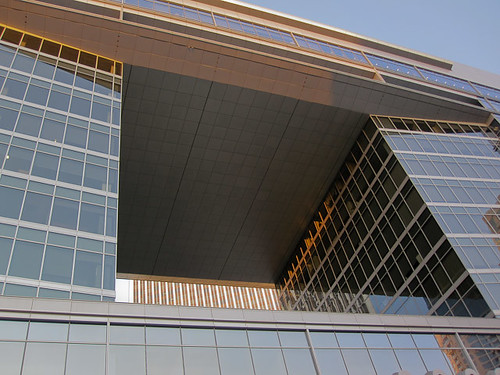I must say that I love the diversity of speakers participate in the IRIS lecture series at the Annenberg. The week before last, the DP of National Geographic Magazine spoke and had tips on what the magazine looks for in a photographer. Last week, the speaker was a photographer who has been in a plethora of publications, including National Geographic. It's still amazing to me that these speakers are there without cost to the general public. Last week's IRIS night lecture at the Annenberg by photographer Ian Shive continued the theme of water to go along with the current Water: Our Thirsty World print exhibit. His talk and accompanying images, entitled "Water & Sky: A Photographic Journey from the Arctic to the Himalaya" reflect the importance of water to the environment, as well as how humans interact with and use water.
The word that comes to mind is inspiring. Shive had a 9-5 desk job for ten years, and on his weekends would visit various national parks. Last year, he released a book about the national parks. Something to be said for leading a double life. Three years ago, he became a full time photographer and now travels the world so that he can share his experiences through photography.
Something I really took away from Shive's talk is that there are two stories to an image: 1) What the image conveys and 2) What it took to make it. He shared with his audience the latter story of his time with Search and Rescue on Mt. McKinley (aka Denali) in Alaska. His photos were absolutely breathtaking, and really spoke to me because I visited Alaska in 2003, and landed on Ruth Glacier on Mt. McKinley by way of a very small Cessna. That experience was one I will never forget for several reasons: 1) How many people get to do that, ever? 2) It was like being on a different planet, I couldn't believe this place existed on Earth and 3) That trip further revealed to me that I have a passion for photography (even if it took a few years to reveal itself to me).
He took us from Denali to India, up the West coast, and over to the Himalayas. He spoke of natural history as his genre of photography, and shared images form a salmon run that he photographed (as in, getting in the water with salmon and nudging them around). This was the last of that salmon run, so it truly was history.
Shive's images and story made me resolve to get out to beautiful places and actually make some pictures. It reiterated that we can read all about photography and look at other photos, but as photographers the goal is to get out there and shoot.
Thanks to the Annenberg for sharing this wonderful speaker, I look forward to seeing former Los Angeles County District Attorney Gil Garcetti speak next week about his photographic journey.
And thank you for stopping by!
